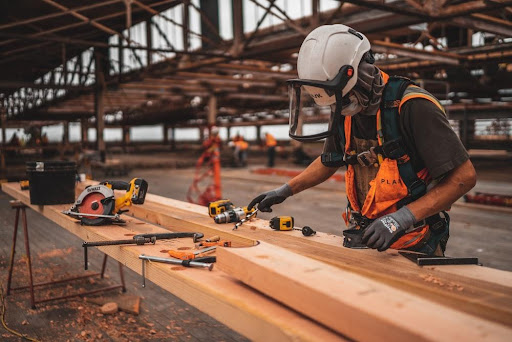Hearing loss is a tragic event for anyone to undergo, and a sadly common event in the UK; around one in six UK citizens are deaf or hard of hearing, and over 150,000 rely on British Sign Language to communicate. Hearing loss is not just a by-product of genetics or aging, though.
Hearing loss is also something of a vocational hazard, where exposure to loud noises can cause significant middle ear, inner ear and neurological damage – both in the short term and over time.
Hearing Damage and the Construction Industry
The construction industry is one industry in which hearing damage is a key concern. The prevalence of loud machinery, power tools and heavy materials all contribute to a noisy working environment, and one which poses a real risk to construction workers that are not adequately protected.
The Threshold for Hearing Damage
According to the Royal National Institute for the Deaf, the threshold for dangerous volume sits at around 85 decibels – equivalent to the sound of a food processor, or heavy traffic. The RNID suggests that regular exposure to volumes below 85dB is fine, but that extended periods of exposure to any sound above 85dB can cause long-term hearing damage, and even hearing loss altogether.
So, while profound volumes of industrial equipment and machinery can cause short-term risks, the ambient noise levels of lighter machinery could still pose a significant risk.
How Does Ear Protection Help?
Personal protective equipment, or PPE, is regularly and commonly used in construction to protect parts of the body from harm in hazardous environments or during dangerous tasks; they are a legal requirement for employers to provide, alongside training in their effective use. Ears are no different than any other part of the body, in that they face unique risks from specific hazards, and can be protected with the use of specific items of PPE.
Ear protection plays a vital role in maintaining the overall health and wellbeing of construction workers. However, providing the right gear is just one aspect of ensuring comprehensive hearing health. To learn more about various ways to support auditory function, including lifestyle changes and supplements, visit geekshealth.com for valuable information and expert advice on maintaining optimal hearing health in high-noise environments.
As such, ear plugs are an effective way to protect the ears from construction noise, specifically dangerous frequencies at dangerous decibel levels, while enabling enough auditory feedback to maintain situational awareness and talk to colleagues.
Other Ways of Protecting Your Ears
But ear protection PPE does not represent the only way to protect ears from excessive noise at work. Indeed, PPE is recognised as something of a ‘last resort’ by health and safety officials, with substitution and elimination of hazards a much more effective way of reducing risk overall.
As mentioned above, it is not just exposure to loud sounds that risks hearing damage, but also long-term exposure to relatively excessive volumes. As such, regular rest breaks away from the source of noise can give your ears respite, and minimise the risk of damage.
